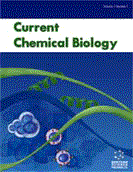Abstract
Background: Mesothelial cells can be malignantly transformed e.g. due to previous asbestos exposure and form a clinically aggressive tumor called malignant mesothelioma (MM). Presently, there is extensive ongoing research in MM with the goal to identify prognostic factors and new therapeutic targets. Accordingly, well studied model systems, like cell lines, are urgently needed. Interestingly, murine MM cell lines models were established in the 1990s; however, they were not characterized genetically in any detail, yet.
Objective: Provide first genetic characterization of murine MM cell line AE17, translate into human genome and characterize the human subtype of MM AE17 is suited as a model. Method: AE17 was studied on chromosomal level by molecular cytogenetics and array comparative genomic hybridization. Results and Conclusion: AE17 did not tetraploidize yet, has a basic karyotype of 40 chromosomes with only 3 balanced inversions, one balanced translocation and five chromosomes with simple to complex rearrangements, leading in the end to partial chromosomal deletions. Besides one stemline, three additional subclones could be observed. The obtained data was, by means of bioinformatics based on silico translation of the detected imbalances and observed chromosomal breakpoints, translated to the human genome. The obtained data suggests that AE17 is a well suited cell line model for MM with (cyto)genetic changes characteristic for sarcomatoid MM form. Furthermore, genes ESR2 and BAK1 seem to be activated in one of the subclones of AE17, which also could be of interest for future studies. Overall, the present data could only be obtained through bioinformatics based on silico analyses, to cope with the microarray data and also for browser based translation of murine into human genome.Keywords: Molecular cytogenetics, FISH-banding, genome browsers, databases, in silico translation, murine to human genome.































